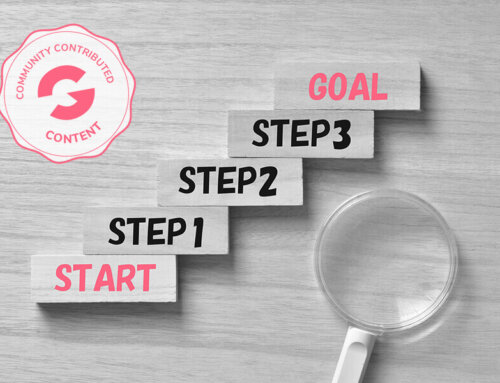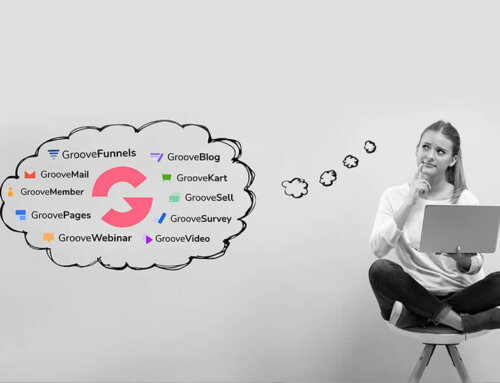What are digital products?
Intangible assets, essentially. Digital assets are media that can be sold and distributed repeatedly online without the need to physically restock inventory – you create it once in most cases. So, these products often come in the form of downloadable or streamable digital files, such as audio files, PDFs, videos, plug-ins, and templates.
Advantages of selling digital products vs. physical goods
- Low overhead costs. You don’t have to hold inventory or incur any shipping charges.
- High profit margins. There’s no recurring cost of goods, so you retain the majority of your sales in profits.
- Potential to automate. Orders can be delivered instantly, letting you be relatively hands-off with fulfillment.
- Flexible products. You can offer free products to build your email list, monthly paid subscriptions for access to exclusive digital content, or licenses to use your digital products. You have a lot of options as to how you incorporate digital products into your business.
- Online learning is the future of education. You have a massive opportunity to expand your business and impact with e-learning.
There are some challenges associated with selling digital products. The most obvious being that you’re competing with content that is freely available on the internet. The solution to this is to ensure that you’re offering high-quality, high-value products that you are proud of and represent your brand well. There will always be free alternatives, and you’re susceptible to theft. But you can take certain precautions to reduce these risks.
Five profitable digital product ideas to sell online
- Educational info products
- Licenses to use your digital assets
- Membership sites
- Digital templates and tools
- Services
1. Educational info products
Online courses are best suited for in-depth content that require walkthroughs and other specific outcomes. Courses are not difficult, but they aren’t easy either. They definitely require effort up front.
A course must include engaging content that makes the process interactive, be it in the form of quizzes or tests. It has to be a step up from free blogs or YouTube tutorials, as the end goal is to deliver transformation results.
If you’re starting off and don’t have the status as an expert yet, you can create a miniature version of your course materials and give that away for free, with the aim of generating interest for your paid digital product.
Always ask yourself: What do you want the learner to be able to do by the end of your course?
2. Licensable digital assets
There are countless individuals and businesses that are looking for digital assets to use for their own purposes. Everything from stock photos to sound effects, there’s nothing that creatives cannot make that cannot be turned into licenced digital assets for others to use in their work – legally.
The idea is that you charge for the use of your assets, through your own store or a marketplace. But while you can make just about anything, you should consider the needs of your target audience, and create the assets that are in demand at that moment in time.
3. Paid membership sites
Instead of selling individual digital products, like an ebook, there’s also the option to bundle everything together in a more sequential order and put it behind a paid monthly subscription to generate recurring revenue.
For this to work, you have to maintain a library of high-quality content and foster a community of members, most likely in a private Facebook group.
And you can build this using a free GrooveMemberⓇ account.
4. Digital templates and tools
Digital products can also be tools that help professionals complete tasks that usually take up a lot of time to do otherwise. This hinges on creating solutions to common pain points for a niche. It’s a great way to turn your skills into digital products that can create passive income for your business.
5. Services
Unlike digital products, your services are limited to the number of hours that you are able to spare. In other words, you are offering your time at a premium price – alongside a complimentary digital product. This could be a consultation, for example. The downside being that you have to exchange your time, but there are certain tasks that you can productize to create more revenue streams that require less maintenance.
How to create digital products
Don’t invest too much time on your first iteration. Just get it done and put it out there as quickly as possible, ensure that you have room to modify and improve upon your material. There are many ideas out there, possibly too many, but often people don’t take action. To get you from ideation to execution, you can follow the process of brainstorming, research, and validation.
Brainstorming
Generate ideas to go off of and just start writing them all down. Do a massive brain dump and don’t be critical at this point because bad ideas might lead to good ones!
Here are some questions to ask yourself:
- Can you teach customers how to use your products?
- Are there things you can help your customers with related to your overall industry?
- What are the topics related to the values you’ve built your business on?
- In what ways could you bring your community of customers together
- What are you good at?
Research
Even industry experts and thought leaders have to do research and continuously stay up-to-date on their topics. Add a bit of research to your list of ideas and find the pain points that exist in relation to your product, service, industry or values.
Here are some places to get started doing basic research:
- YouTube
- SkillShare
- SlideShare
- Books
- Facebook groups
- Industry forums
- Product reviews
- Blog posts and comments
Validation
Before you end up committing too much time to any given idea, you want to validate it and make sure it’s viable. The last thing you want to do is invest a lot of time or money in a new venture without knowing it has a chance to be successful.
Here are some ways to validate your idea:
- Keyword research
- Google Trends
- Ask for feedback
- Start small and iterate
Creating an online store for your digital products
We’d be remiss if we didn’t mention that you can create your entire ecommerce store with a GrooveKart account. Once you’ve validated your idea, you want to get it on an ecommerce store asap!
You don’t need to be tech savvy or have a large budget – as you can set up everything free of charge, apart from your domain name. There’s even a 3-day GrooveKart Challenge that you can watch and follow up to get your store up and running in no time at all.
What kind of digital products sell best?
The best-selling digital products include ebooks, graphic design, templates, downloadable prints, music and audio, stock photography, and print-on-demand products like custom t-shirts, notebooks, and mugs.
But when it comes down to it, you just have to pick something and give it a go! Don’t get stuck in perfectionism. The longer you get stuck in the ideation phase, the longer it will take to launch your product. And without the massive overheads of selling physical products, only the upfront time commitment, you can easily and quickly scale digital products into a profitable online business.
The truth of the matter is, whether or not you’re a new or established business, there are numerous ways and reasons why you should incorporate digital products into your business model.





Leave A Comment